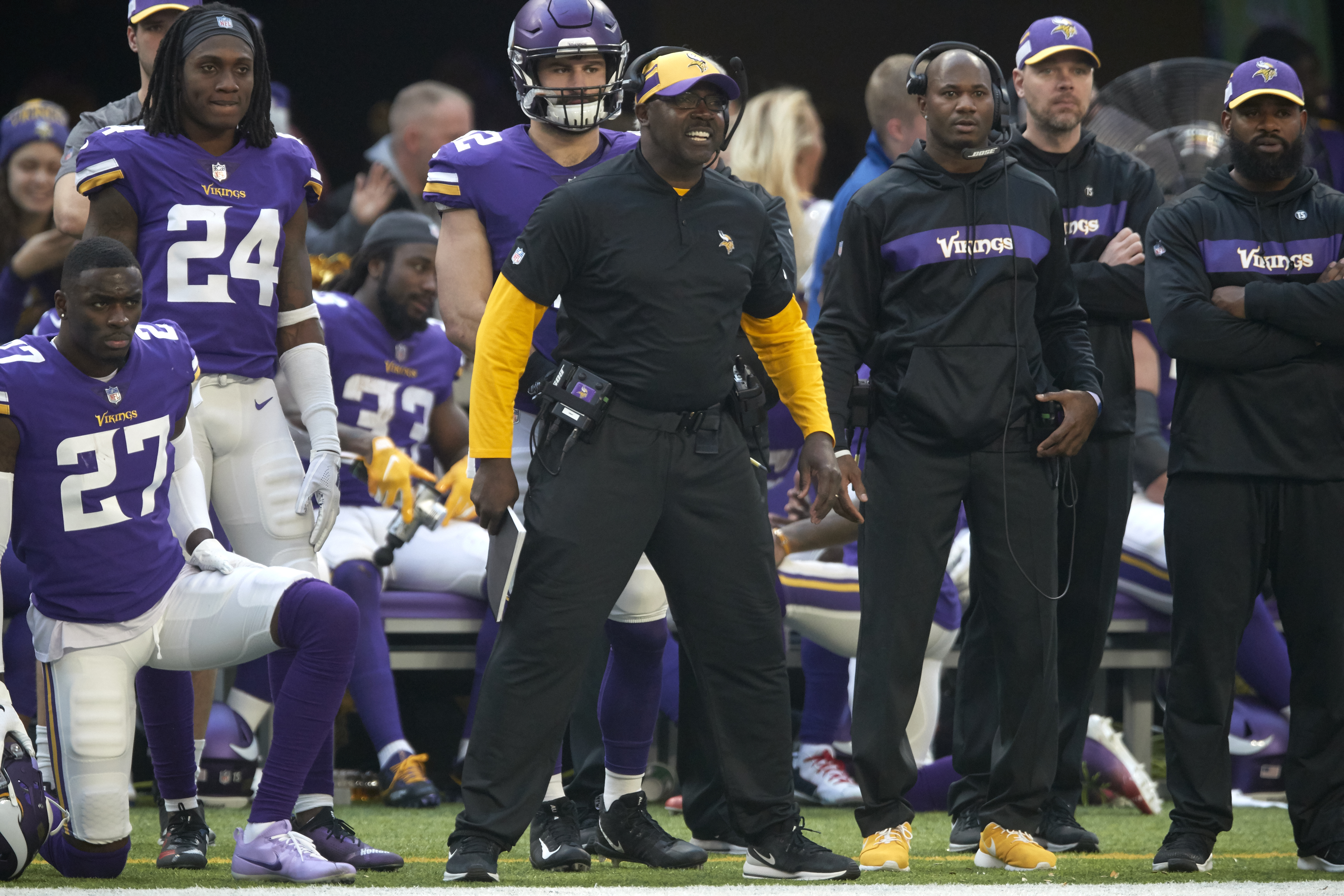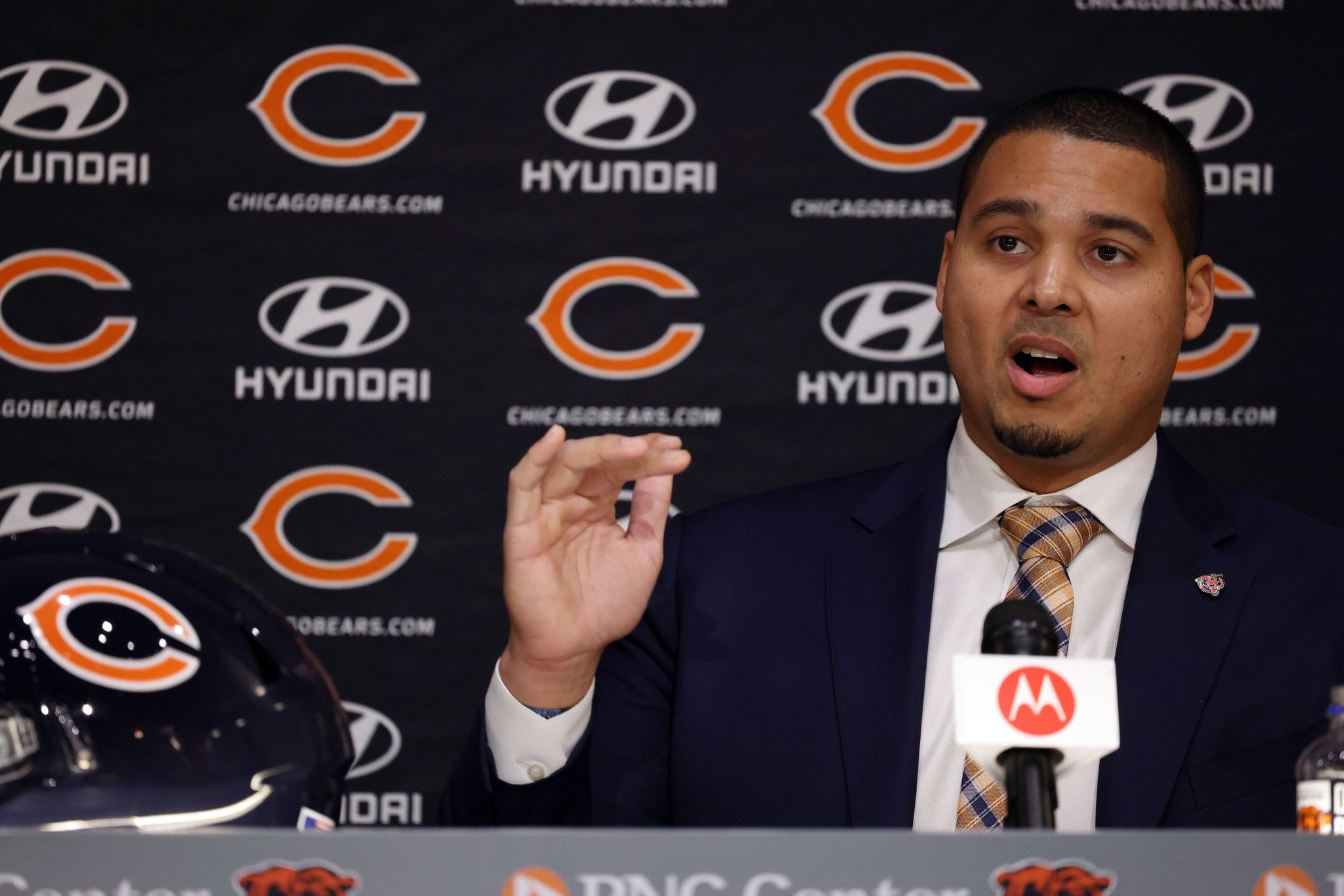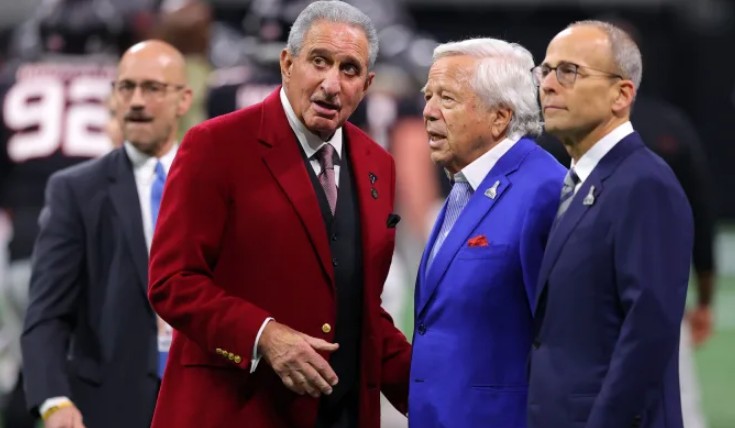Will face time with NFL owners result in minority employees filling top-tier jobs at higher rates?
The potential benefits of NFL’s new program intended to accelerate the rise of qualified minority employees are apparent, participants say, but questions remain.
After only a few minutes, Morocco Brown, who is in charge of college scouting for the Indianapolis Colts, saw that he could benefit from the NFL’s new program to speed up the rise of qualified minorities in coaching and front-office jobs.
Brown listened intently during Atlanta Falcons owner Arthur Blank’s opening remarks at the annual spring meeting, as Blank expressed his belief in the importance of the accelerator program, which brings participants into contact with the powerful people who run professional sports’ most successful leagues for the first time, many for the first time. Face time with upper-echelon executives and franchise owners is expected to be the most useful component of the program for those in the inaugural class, according to Blank. Brown agreed with him on this point.
“It’s not only who you know in the NFL,” Brown, who is black, said, “but how well they [those who make hiring decisions] can get to know you.” “A lot of the time, we [minority club employees] don’t receive that exposure to owners.”
“In this large business, they’re in charge of billion-dollar teams.” It’s beneficial to be in a situation where you can just converse with them, in a more intimate and laid-back atmosphere where they can get to know you. Definitely. “
Each of the NFL’s 32 teams selected two people (one assistant coach and one front-office employee) to participate in the two-day session. Participants went to workshops on a variety of topics meant to help them grow in their current jobs. The goal was to get them ready to be at their best when they join the hiring pipeline to look for jobs as head coaches and general managers.
Blank made it clear where he wanted participants to focus their efforts: on building connections with the business owners.
Every single one of you is a smart man or woman. There is no doubt about that. You’re all fantastic leaders. “There’s no doubt about it, “Blank stated. “However, as a business owner, we tend to gravitate toward folks we can get to know a little bit.”
“Let’s make sure we get to know one another, spend time together, visit, and shake hands.” I don’t know who the owner is… “That is not delighted, pleased, and looking forward to getting to know a lot of you, if not all of you, not only over the next few days, but on a long-term basis.”

Jerry Gray (center), pictured with the Minnesota Vikings in 2018, said because of limited time for coaches during the season, relationship-building with team owners starts in the offseason.
Many black NFL employees who have interviewed for top-tier positions in football operations say they rarely – if ever – interact with decision-makers prior to the start of the process, whereas team owners are often much more familiar with their white counterparts’ professional and personal backgrounds. NFL officials say that the difference is just one more thing that makes it hard for employees from different backgrounds to move up in a league that is still struggling to reach its stated goal of creating a truly inclusive workplace from the front office to the field.
Brown, who previously worked in front-office roles with the Chicago Bears and Washington Commanders before joining the Colts, has recently been on numerous short lists for general manager opportunities. Brown thinks that making friends with business owners will help him move up the corporate ladder in the future.
“You can be real and, ideally, make the impression you want to make if you can relate your experience straight to the [club] owners,” Brown said. “If there isn’t somebody there [a layer between a possible candidate and an owner], it is a critical component… for them to learn more about us.” That’s why the league created this opportunity for us to gain visibility, because it’s far more difficult to get employed if they [team owners] don’t know much about you.
The importance of the setting cannot be emphasized enough for former NFL defensive coordinator Jerry Gray, who is also black.
“If you can tell your story, tell your story directly to the [club] owners, you can be authentic and, hopefully, make the impression you want to make.”
— Morocco Brown, Indianapolis Colts director of college scouting on the NFL’s accelerator program
Gray, one of the league’s finest defensive assistants, said it’s difficult to approach owners before games during the season because the competitive environment isn’t favorable to forging relationships. He believes the league chose the appropriate place and time to launch the program.
Gray, who presently teaches defensive backs for the Green Bay Packers, said “You can kind of relax a little bit more when you meet someone and it’s not in a hostile, opponent type of situation.” “They get to know who you are, and you get to ask them questions about themselves and how they started their company.”
“You may only have two minutes on the football field [before a game] in most cases.” We may have five, ten, or fifteen minutes to sit and discuss this here. ‘Hey, tell me about yourself,’ you can say. “Can you tell me how you got started?” So now is your chance to strengthen that bond. Hopefully, it gives them a different perspective on you and gives you a different perspective on the [team] owners. At this time of year, whenever you see someone comfortable and away from their business, you have a better opportunity to start to create something. “
Of course, no one in the league is claiming that a few face-to-face meetings between team owners and a diverse group of NFL employees will change the game in terms of hiring. On the other hand, league administrators must continue to think outside the box when it comes to hiring, according to N. Jeremi Duru, a sports law professor at American University.
Duru, a longtime observer of the NFL’s employment processes, remarked, “Well, the premise for [the program] makes sense.” “It makes sense to get people in a room together and have meaningful conversations and interactions, since this could be the start of long-term relationships that are deep and important.”
“With regard to this and a variety of other projects, the final question is, ‘Are the owners sincere in their interactions?’ If the answer to that question is no, then this project will be no more fruitful than others we’ve seen. If the answer is yes, then possibly this will help to advance the ball. “

Chicago Bears general manager Ryan Poles is one of two Black general managers hired in the last hiring cycle.
The initiative is the latest step in the NFL’s extraordinary efforts to solve the league’s problem with hiring people from different backgrounds. The NFL is also dealing with a lawsuit filed by former Miami Dolphins head coach Brian Flores, who says that the organization makes a lot of mistakes when it comes to hiring.
Mike Tomlin of the Pittsburgh Steelers, Lovie Smith of the Houston Texans, and Todd Bowles of the Tampa Bay Buccaneers, who was just promoted from defensive coordinator when former head coach Bruce Arians stepped down and assumed a front-office post, are the only black head coaches in the league. The Dolphins’ biracial head coach, Mike McDaniel, joins the Commanders’ Ron Rivera and the New York Jets’ Robert Saleh as the league’s other minority head coaches.
There were 36 head-coaching openings in the previous five hiring cycles. Just four black men were employed to fill the openings. White coaches were picked for seven of the nine slots in the hiring cycle that ended before this season’s NFL scouting combine. Bowles’ unexpected promotion came after the cycle was thought to be finished.
In terms of general managers, the league can brag about increased hiring.
The Bears hired Ryan Poles, the former executive director of player personnel for the Kansas City Chiefs, as their new general manager during the most recent hiring cycle. The Minnesota Vikings have hired Kwesi Adofo-Mensah, the former Cleveland Browns’ vice president of football operations, as their next general manager.
During the preceding cycle, the Atlanta Falcons hired Terry Fontenot, the Detroit Lions recruited Brad Holmes, and the Commanders hired Martin Mayhew. There are now seven black general managers in the NFL. It has never had more than seven, though.
In 2020, black or African American players made up 57.5 percent of NFL rosters.It’s a fact: Black people make up more than half of the NFL’s on-field workers, yet they’re disproportionately underrepresented in team leadership.
Flores, who was hired as an assistant coach with the Steelers in February after being sacked by the Dolphins unexpectedly in January, has claimed that the NFL discriminates in hiring based on race. In a document written to owners four days after ruling that Flores’ case is without substance, the league acknowledged that it recognizes Flores’ and others’ concerns, and that it will launch a complete assessment of its whole approach to diversity, equity, and inclusion.
The NFL took the unprecedented step of passing a coaching hiring mandate during its annual meeting of team owners in West Palm Beach, Florida, in March. For the 2022 season, club owners enacted a policy requiring all 32 teams to hire a minority offensive assistant — the league’s first-ever hiring mandate.
Rod Graves, the head of an independent organization that advises the NFL on issues of diversity, equity, and inclusion, thinks the new initiative is a solid move among many others the league has lately taken. But, as always, it’s all about the numbers when it comes to team hiring.
“I’m hopeful that the outcome will lead to more such initiatives at the club level,” said Graves, the Fritz Pollard Alliance’s executive director. “An additional effect is a more informed base of coaches and executives, while the intended aim is to improve opportunities for minority leadership.”
“As a result, the league’s quality will improve in the long run.” The program brings together some of the greatest players in the league. Any concept of a faulty pipeline is demolished by a glance across the room. There is a particularly strong contingent of minority talent on hand. It’s an excellent opportunity to nurture, motivate, and acquaint yourself. The advantages may be extensive. “
Everything begins with a conversation, and the league office has put the right people in the proper places. However, it is once again up to team owners to walk the walk.
Jason Reid is Andscape’s senior NFL reporter. He enjoys sports, particularly those involving his son and daughter.





